
Jessica’s sharp eye for expressive art and her knack for nurturing creative careers make her a standout advocate for her clients (I know this is true–I asked a few!). Known for her love of Airtable, color-coded spreadsheets, and deep-dive submission lists, she balances organization with boundless enthusiasm for great storytelling. In this interview, Jessica dishes on her career, her favorite projects, and what it takes to succeed in today’s competitive kidlit market.
Learn more about Jessica here:
RVC: You’ve worked in publishing for almost 15 years, first as an editor, then on the art side of things, and now as an agent. How have those roles shaped your approach to representing illustrators and authors?
JSJ: My time working in-house at publishers informs just about everything I do as an agent. Though I was never actually an art director! At Candlewick, I worked in the Art Department but I had a pretty unique role – I wore many hats, but my primary responsibility was to coördinate illustrator commissions: after an editor acquired an author’s story for a book that would be illustrated (a picture book text for example), I would help select which artist Candlewick would hire to illustrate that book, and then negotiate the deal with the illustrator’s agent.
RVC: Oh, that’s interesting. I bet that gave you some great insight.
JSJ: Being part of that process searching for the perfect illustrator for a particular story gave me a lot of key insights into how I represent my clients and promote their work with publishers – from what type of information is helpful to share in email campaigns to helping my clients develop their portfolios.
And of course, negotiating many illustrator deals on behalf of the publisher gave me a lot of great intel now that I do the same thing from the other side of the desk!
RVC: How did your time at Barefoot Books and Candlewick Press influence your understanding of children’s publishing, particularly for illustrators?
JSJ: Barefoot is a small publisher, so beginning my career there gave me a great overview of all facets of children’s publishing – I was working in the same room as the Creative Director, the heads of sales and marketing, the CFO, etc. I kept my ears open and offered to help doing lots of different types of tasks that needed doing. It made my workload a little overwhelming but also taught me a lot! At larger companies, it can be harder to learn about what your colleagues are doing in different departments, and how their work impacts yours (and the bottom line). So that early role as an editor gave me experience in many corners of this business, which helps me guide my clients through lots of different situations.
And my time at Candlewick gave me a deep understanding of the market. To inform my work commissioning illustrators, I got to know every agent representing kidlit artists and each of their lists, met college students graduating from illustration programs, kept a close eye on all the key children’s lit awards, and, of course, read as many picture books as I could. It all helped hone my artistic tastes and commercial instincts.
RVC: Let’s talk about Root Literary. Why did you choose it, and how does it align with your vision for your clients?
JSJ: When I became an agent, I wanted to build a boutique list of illustrators at an agency that wasn’t currently representing illustrators so I had room to establish the look and feel of my list. But after several years working solo on so many aspects of my job, I realized I could grow my business (and my clients’ careers!) faster if I had colleagues who represented illustrators too.
Two agents at Root Literary, Molly O’Neill and Kurestin Armada, were already representing illustrators and I loved both of their lists. We have similar tastes without actually overlapping, so I felt my roster of illustrators would harmonize well with theirs. And I love Root’s approach to agenting – it’s very collaborative. So, I knocked on Holly Root’s proverbial door and was over the moon when she invited me to join the team.
RVC: What’s the story behind the first picture book you edited?
 JSJ: I started at Barefoot as an editorial intern and worked my way up, so I was initially supporting the other editors’ lists. The project that looms the largest in my mind all these years later is Barefoot Books World Atlas, which was an extraordinarily complex project to create! I will never forget that the day we finally sent it off to the printer was the same day South Sudan became an independent state. So… I started a list of reprint corrections before the book even hit the press. That might be a record?!
JSJ: I started at Barefoot as an editorial intern and worked my way up, so I was initially supporting the other editors’ lists. The project that looms the largest in my mind all these years later is Barefoot Books World Atlas, which was an extraordinarily complex project to create! I will never forget that the day we finally sent it off to the printer was the same day South Sudan became an independent state. So… I started a list of reprint corrections before the book even hit the press. That might be a record?!
RVC: I bet it is! Now, how did this experience compare to the first picture book you repped as an agent?
 JSJ: The first deal I closed as an agent was for Ashley Yazdani’s Cosmic Wonder: Halley’s Comet and Humankind, which, ironically, also takes a sweeping look at history and the earth. But thankfully with zero maps!
JSJ: The first deal I closed as an agent was for Ashley Yazdani’s Cosmic Wonder: Halley’s Comet and Humankind, which, ironically, also takes a sweeping look at history and the earth. But thankfully with zero maps!
RVC: Let’s dig into the agenting side now. What’s a typical day like for you?
JSJ: It is super hard to describe a typical day as an agent because there are so many different facets to our job. And very, very often, what I spend all day doing isn’t necessarily what I planned to work on. We sometimes have to make quick pivots if time-sensitive things come up, like a surprise offer on a book (yay, the best disruption!) or a sticky situation our clients need help navigating.
The easiest thing to say is that I spend a lot of time writing emails. So, so many emails!
RVC: That’s a popular answer, to be sure. What’s a misconception about picture books that you’d like to debunk?
JSJ: Picture book authors, you do not need to hire an artist to illustrate your book! In fact, I am begging you not to do this. Publishers like to pair illustrators with picture book texts themselves (see: my old job at Candlewick!) so most of the time, it’s actually detrimental to your book if you submit it with an illustrator already attached. (Unless, of course, you are an author-illustrator planning to illustrate the book yourself.) It’s also better for the illustrator to be hired by the publisher, who can give them a share in the book’s royalties and handle all the accounting for that, etc. So, save yourself and everyone else the trouble!
RVC: For illustrators who also write, what unique challenges or opportunities do you see during the submission process?
JSJ: Sometimes an editor might love an author-illustrator’s art style but not connect as much with their story, or vice versa. An editor needs to love both to acquire a book. But the upside when editors pass on a submission but fall in love with one facet or another of a creator’s work, is that there’s usually an opportunity to follow that lead and connect on another project – even if it ultimately takes a while to get all the stars to align!
RVC: In another interview, you mentioned sometimes relying on “gut feelings” when matching projects to editors. Can you share an instance when your intuition paid off in a big way?
 JSJ: One of the first submissions I sent out as an agent was a very special book, Lonely Bird by Ruth Whiting. It’s whimsical and sensitive, warm and hopeful but also a little melancholy, and the art is absolutely incredible (realistic oil paintings with paper collage) but a far cry from the digital styles that are very on trend right now. So, in short: it’s an amazing book but I worried it wasn’t going to be an easy sell. I knew I had to get it in front of the right editor, someone who would really “get” this story creatively and who would also know how to position it in the market so readers would understand it too.
JSJ: One of the first submissions I sent out as an agent was a very special book, Lonely Bird by Ruth Whiting. It’s whimsical and sensitive, warm and hopeful but also a little melancholy, and the art is absolutely incredible (realistic oil paintings with paper collage) but a far cry from the digital styles that are very on trend right now. So, in short: it’s an amazing book but I worried it wasn’t going to be an easy sell. I knew I had to get it in front of the right editor, someone who would really “get” this story creatively and who would also know how to position it in the market so readers would understand it too.
I was still getting to know a lot of editors, so I did a ton of research while building my submission list. But when a book is doing something pretty different than what’s out there, you can only connect the dots so much – ultimately you have to trust your instincts. And I knew exactly who I was going to share Lonely Bird with at Candlewick from the jump: Mary Lee Donovan. She’s a brilliant editor and I had a good feeling that she was going to see the same magic in Ruth’s debut that I did. And happily, I was right! She made an offer not only for Lonely Bird, but two sequels as well, at lightning speed. She’s been an incredible partner to help bring Ruth’s vision to life.
RVC: That’s a great success story. Now, you recently launched a newsletter. Care to share what and why?
JSJ: There are a lot of smart people who are sharing their knowledge of the publishing industry in various places (including here!), but I’ve found there isn’t quite as much out there specifically for children’s book illustrators. I wanted to help contribute to that knowledge pool, but I didn’t want to do it on traditional social media platforms run by algorithms. I was intrigued by substack (I used to love blogs back in the day) and wanted to learn more about it. And I figured, what better way to do that than to start a newsletter myself? I’m still finding my rhythm with writing posts but I really love that corner of the internet.
RVC: Best of luck with the newsletter! One final question for this part of the interview. What are some upcoming client projects that you’re really excited about?
 JSJ: Oooh, I love this question! I cannot wait for The Dinosaur Seed by Lindsey Yankey to hit shelves this summer. It’s such a unique book – the story is told completely through the dialogue of four kids as they play pretend at the park, almost like a short play. I really want to do a dramatic reading of it with a few of my friends each voicing one of the characters. And the art is absolutely exquisite. I think kids are going to love it.
JSJ: Oooh, I love this question! I cannot wait for The Dinosaur Seed by Lindsey Yankey to hit shelves this summer. It’s such a unique book – the story is told completely through the dialogue of four kids as they play pretend at the park, almost like a short play. I really want to do a dramatic reading of it with a few of my friends each voicing one of the characters. And the art is absolutely exquisite. I think kids are going to love it.
I’m also super excited about Floor It, written by Bex Tobin Fine and illustrated by my client Federico Fabiani. It transforms a baby’s ordinary crawl across the floor into a racecar-themed adventure, with lots of clever wordplay and mesmerizing, slightly surreal art. I’m a huge Formula 1 fan so love all the racecar jokes.
And last but not least, my client Hayden Goodman illustrated a fabulous new take on The Night Before Christmas, which is coming out this fall. It’s set in a NYC apartment building, and it’s funny and sweet and absolutely gorgeous. There are lush cutaways of all the different families’ homes with tons of little details to discover, and Santa has a fresh look and a magnificent magical pipe.
RVC: Alright, thanks for that–best of luck with all of those projects. But now…it’s time for the LIGHTNING ROUND. Let’s zip through questions and zap in those answers. Are you ready, Jessica?
JSJ: Ready!
RVC: What’s the most Virgo thing you do every day?
JSJ: Ha! So many answers to this, but the #1 thing may be the way I tag almost every single email I send/receive with myriad color-coded labels.
RVC: What’s the most unexpected thing you’ve ever used Airtable for?
JSJ: Gardening! I have a base where I track all the perennials I grow in my yard, the care instructions, when they bloomed each year, etc. It’s ridiculous but also fun. I call it my “recreational spreadsheet.”
RVC: How many projects can illustrators juggle without losing it?
JSJ: This depends on the illustrator. Though I try to encourage my clients to have only 2 new picture books publish per year, max. For lots of reasons, but workload chief among them.
RVC: A picture book from 2024 with underappreciated-but-awesome art?
 JSJ: I have to mention Lonely Bird again, because the second book in the series, Lonely Bird’s Dream has the most incredible art. Ruth’s process is fascinating – she paints in oil, which is its own special feat, but she also creates all her illustrations in real life and photographs them as references for her paintings. Which means she’s literally built all the flying contraptions that Lonely Bird builds in the story, and she spends a lot of time lying on the floor taking photos from Lonely Bird height. She did a few interviews talking about her process that I recommend checking out!
JSJ: I have to mention Lonely Bird again, because the second book in the series, Lonely Bird’s Dream has the most incredible art. Ruth’s process is fascinating – she paints in oil, which is its own special feat, but she also creates all her illustrations in real life and photographs them as references for her paintings. Which means she’s literally built all the flying contraptions that Lonely Bird builds in the story, and she spends a lot of time lying on the floor taking photos from Lonely Bird height. She did a few interviews talking about her process that I recommend checking out!
RVC: If your life were illustrated as a picture book, what would the title and art style be?
JSJ: I’m very bad at brainstorming good titles in real life (I desperately wish I were better at this!) so whatever I came up with myself, the editor would probably gently suggest we change, haha. I don’t know if I could choose just one art style! I would need someone else to spearhead the illustrator search for my own book. Doctors are the worst patients, and all that.
 RVC: What’s your favorite quotation about agenting, publishing, or writing kidlit?
RVC: What’s your favorite quotation about agenting, publishing, or writing kidlit?
JSJ: “Tell them stories….That’s what nourishes them. You must tell them true stories, and everything will be well, everything. Just tell them stories.” from The Amber Spyglass by Philip Pullman (my all-time favorite book!)
RVC: Thanks so much, Jessica!


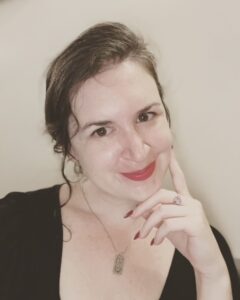 Welcome to Sam Farkas, a literary agent at Jill Grinberg Literary Management who helps bring innovative and impactful picture books to life. With a background in publishing that includes subsidiary rights at Penguin and extensive experience connecting authors and illustrators with global audiences, Sam is passionate about championing stories that captivate young readers.
Welcome to Sam Farkas, a literary agent at Jill Grinberg Literary Management who helps bring innovative and impactful picture books to life. With a background in publishing that includes subsidiary rights at Penguin and extensive experience connecting authors and illustrators with global audiences, Sam is passionate about championing stories that captivate young readers.

 Imagine a world where a former forensic scientist analyzes the ingredients of a perfect picture book – with a side of horror movies and ambitious baking goals. That’s the reality of Dan Cramer, founder of Page Turner Literary Agency.
Imagine a world where a former forensic scientist analyzes the ingredients of a perfect picture book – with a side of horror movies and ambitious baking goals. That’s the reality of Dan Cramer, founder of Page Turner Literary Agency.

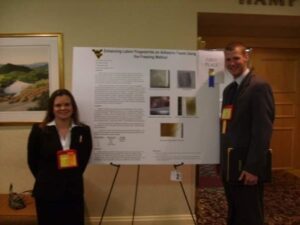

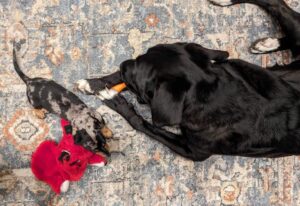


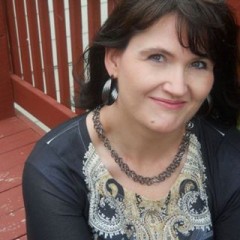 Today, we’re diving into the imaginative world of Heather Cashman, a seasoned literary agent at Storm Literary Agency, whose dynamic career spans across the evocative realms of Picture Books, Middle Grade, Young Adult, and Adult fiction and nonfiction. Heather’s enthusiasm for boundary-pushing narratives and her commitment to fostering books that evoke a sense of wonder make her a distinguished figure in the literary community.
Today, we’re diving into the imaginative world of Heather Cashman, a seasoned literary agent at Storm Literary Agency, whose dynamic career spans across the evocative realms of Picture Books, Middle Grade, Young Adult, and Adult fiction and nonfiction. Heather’s enthusiasm for boundary-pushing narratives and her commitment to fostering books that evoke a sense of wonder make her a distinguished figure in the literary community.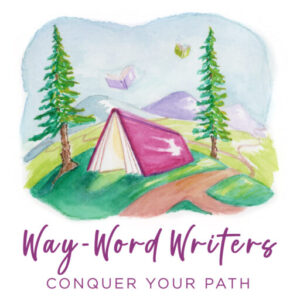
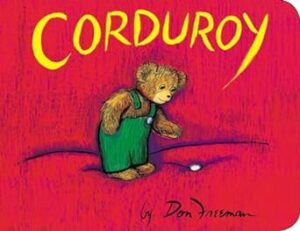
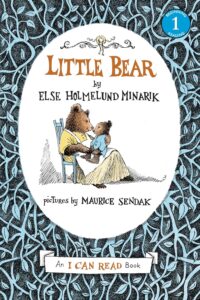
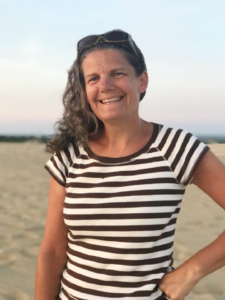 Welcome to Rachel Orr, a longtime literary agent with Prospect Agency. Instead of going with the standard biography here, I’m going to include a few key things she’s said—or others have said about her—that are especially telling.
Welcome to Rachel Orr, a longtime literary agent with Prospect Agency. Instead of going with the standard biography here, I’m going to include a few key things she’s said—or others have said about her—that are especially telling.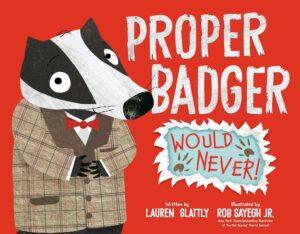
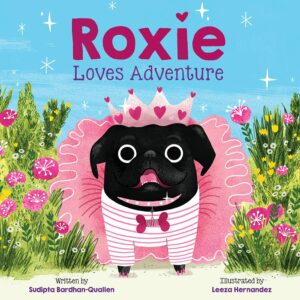
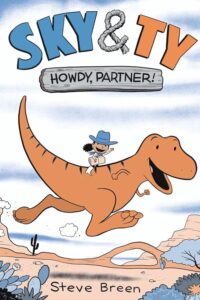
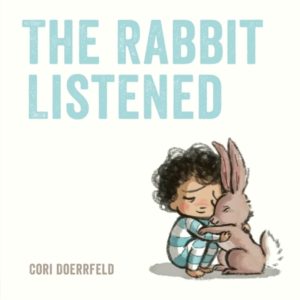
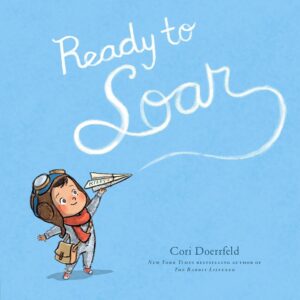
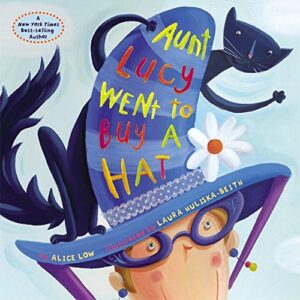
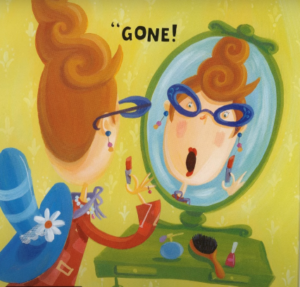 didn’t want it just magically flying behind her on every spread. So Laura came up with the idea to show Aunt Lucy looking in the mirror at the beginning of the book, and she thinks her hat is gone, but it’s really tied around her neck with ribbon and hanging behind her (which the reader can clearly see). It was such a fun solution, and taught me the importance of trusting an illustrator, too.
didn’t want it just magically flying behind her on every spread. So Laura came up with the idea to show Aunt Lucy looking in the mirror at the beginning of the book, and she thinks her hat is gone, but it’s really tied around her neck with ribbon and hanging behind her (which the reader can clearly see). It was such a fun solution, and taught me the importance of trusting an illustrator, too.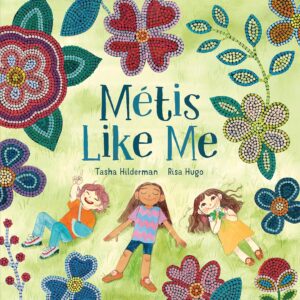
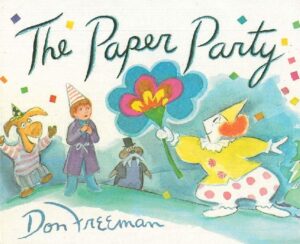
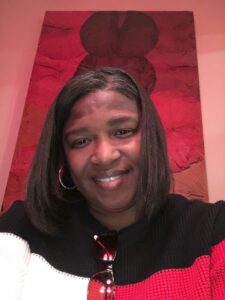 I do not agree with you “that there are some elements good stories need, like conflict and tension, that keeps the story moving and the reader reading.” I see this all the time in craft books and I disagree. Many cultures do not tell stories this way. Yet, they tell amazingly good stories. We cannot dismiss stories because it doesn’t follow the standards of whiteness. We have to respect cultures and embrace those cultures and their style of storytelling. This is why we are at the point in publishing where there’s a need and cry for “diverse books and stories.” Authentic storytelling is not one way, it isn’t a cookie-cutter narrative. Authentic storytelling is how that culture tells stories and what stories they deem necessary to be told. And I would hope that others would want to experience how different cultures document their stories.
I do not agree with you “that there are some elements good stories need, like conflict and tension, that keeps the story moving and the reader reading.” I see this all the time in craft books and I disagree. Many cultures do not tell stories this way. Yet, they tell amazingly good stories. We cannot dismiss stories because it doesn’t follow the standards of whiteness. We have to respect cultures and embrace those cultures and their style of storytelling. This is why we are at the point in publishing where there’s a need and cry for “diverse books and stories.” Authentic storytelling is not one way, it isn’t a cookie-cutter narrative. Authentic storytelling is how that culture tells stories and what stories they deem necessary to be told. And I would hope that others would want to experience how different cultures document their stories. The takeaway message to self-published authors is to spend a lot of time and thought putting your book together. The Churchmans [a couple who self-published] looked at formats and chose the largest trim size that could fit comfortably on standard shelves. They printed the book on 100lb paper—heavier stock than most traditional publishers can use—and also used extra heavy board for the hardcover case. They hired an editor to help them shape the text. And they mounted a Kickstarter campaign to fund their upfront costs. They took a lot of care.
The takeaway message to self-published authors is to spend a lot of time and thought putting your book together. The Churchmans [a couple who self-published] looked at formats and chose the largest trim size that could fit comfortably on standard shelves. They printed the book on 100lb paper—heavier stock than most traditional publishers can use—and also used extra heavy board for the hardcover case. They hired an editor to help them shape the text. And they mounted a Kickstarter campaign to fund their upfront costs. They took a lot of care.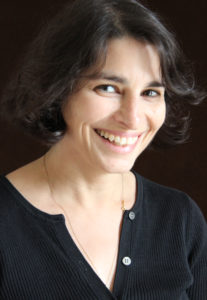 I’m most likely to pass on rhyming picture books or picture books that cover ground that’s well-trod (alphabet books, goodnight books). That’s both personal taste and a business decision. For example, it’s extremely hard to pull off rhyme. And in a market flooded with “goodnight” books, it can be hard to make another one stand out in the crowd. Also, just as a matter of personal taste, I don’t like treacly-sweet “I love you” books.
I’m most likely to pass on rhyming picture books or picture books that cover ground that’s well-trod (alphabet books, goodnight books). That’s both personal taste and a business decision. For example, it’s extremely hard to pull off rhyme. And in a market flooded with “goodnight” books, it can be hard to make another one stand out in the crowd. Also, just as a matter of personal taste, I don’t like treacly-sweet “I love you” books. First, when I started in children’s publishing, we were just beginning to see books like Harry Potter,
First, when I started in children’s publishing, we were just beginning to see books like Harry Potter, 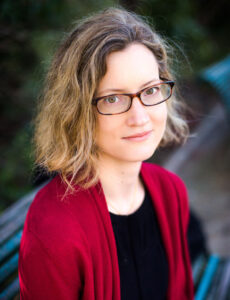 People in children’s book publishing are often drawn to this industry, at least in part, because it offers a chance to do something meaningful and positive in the world. I think it’s safe to say that with the start of the Trump administration, many acquiring editors feel uniquely positioned to help counter some of the policies or currents of opinion—about immigrants, about diversity, about
People in children’s book publishing are often drawn to this industry, at least in part, because it offers a chance to do something meaningful and positive in the world. I think it’s safe to say that with the start of the Trump administration, many acquiring editors feel uniquely positioned to help counter some of the policies or currents of opinion—about immigrants, about diversity, about 

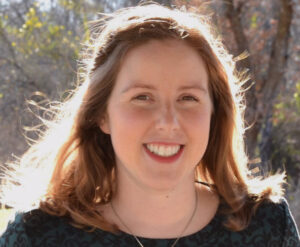 I can tell from the first page if I want to read on. I tag as I look through things: yes, no, further investigation needed. I am looking for specific stories now and specific writing qualities. If it is something I might be interested in, I give it three chapters. I need to be compelled in three chapters or I pass. After that, if I am still interested, I request. Once a full manuscript comes in, I read it with an eye for how much work it will need, and if I have a vision or feel compelled. I have perfectly lovely manuscripts that I pass on because I just didn’t find that passion. And passion drives the ship. When you are neck deep in 13 passes from editors, you want to feel that spark of joy that makes you say, “Screw this, I know I am right.”
I can tell from the first page if I want to read on. I tag as I look through things: yes, no, further investigation needed. I am looking for specific stories now and specific writing qualities. If it is something I might be interested in, I give it three chapters. I need to be compelled in three chapters or I pass. After that, if I am still interested, I request. Once a full manuscript comes in, I read it with an eye for how much work it will need, and if I have a vision or feel compelled. I have perfectly lovely manuscripts that I pass on because I just didn’t find that passion. And passion drives the ship. When you are neck deep in 13 passes from editors, you want to feel that spark of joy that makes you say, “Screw this, I know I am right.”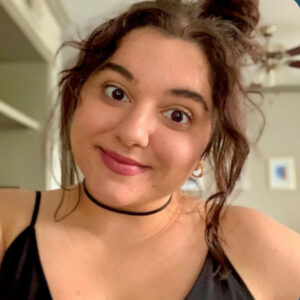 I think as writers we often forget how many plates agents have to spin and that most agents still need a day job to survive financially. Being on the other side of things helped me understand timing and what goes into deciding what projects to represent. While there are so many wonderful stories out there that I may fall in love with, there’s also an element of how I can make this book great and if I can sell it. Oftentimes, as writers we idolize the idea of getting an agent and forget that it is a business partnership as well. The reason why it takes so long for agents to get back to writers right away is because clients come first and it takes time to read, to make sure the project will be the right partnership. That being said, I wish I knew how much went into agenting before I started querying because now a rejection isn’t something I worry about and I understand if it takes long, it actually might be a good thing. It’s all about patience, right timing and working on your craft in the meantime.
I think as writers we often forget how many plates agents have to spin and that most agents still need a day job to survive financially. Being on the other side of things helped me understand timing and what goes into deciding what projects to represent. While there are so many wonderful stories out there that I may fall in love with, there’s also an element of how I can make this book great and if I can sell it. Oftentimes, as writers we idolize the idea of getting an agent and forget that it is a business partnership as well. The reason why it takes so long for agents to get back to writers right away is because clients come first and it takes time to read, to make sure the project will be the right partnership. That being said, I wish I knew how much went into agenting before I started querying because now a rejection isn’t something I worry about and I understand if it takes long, it actually might be a good thing. It’s all about patience, right timing and working on your craft in the meantime. A big part of this process for me is trying to make sure that the surface story and takeaway are strong enough to catch an editor’s attention and enable them to see the bigger picture. I’m not an editor in the way that your editor, Frances Gilbert, is and she will definitely make
A big part of this process for me is trying to make sure that the surface story and takeaway are strong enough to catch an editor’s attention and enable them to see the bigger picture. I’m not an editor in the way that your editor, Frances Gilbert, is and she will definitely make 